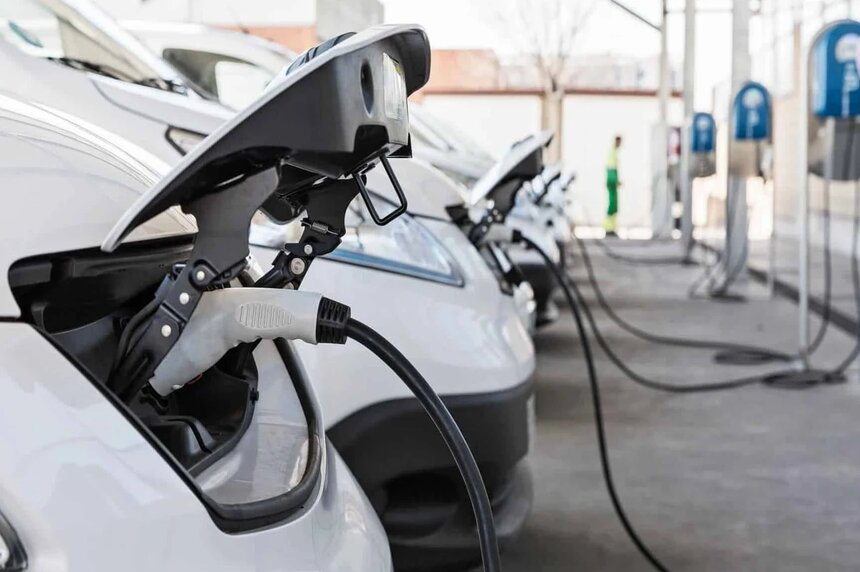26
December
Why is EV Charging Essential for Fleet Management?
Managing a fleet of vehicles comes with its own challenges, especially as businesses strive to become more eco-conscious. In recent years, the surge of electric vehicles (EVs) has opened new possibilities for fleet management. In fact, EV charging is now essential for modern fleet management.
Fleet management has always been a critical aspect of businesses that rely on transportation to deliver goods or services. In the electric vehicle era, the importance of fleet management has only grown. EVs bring a paradigm shift in fleet management, requiring new strategies and infrastructure to support their unique requirements.
One of the main challenges of fleet management is ensuring the availability and reliability of vehicles. With EVs, this challenge extends to the availability and reliability of charging infrastructure. Businesses can invest in a robust charging network to ensure that their EV fleet remains fully operational at all times. It involves strategically having charging stations in locations that align with the fleet's requirements and ensuring that the infrastructure can adequately accommodate the demand.
Understanding the Basics of EV Charging
Before delving into the benefits of incorporating EV charging in fleet management, it is essential to understand the basics of EV charging. Electric Vehicle charging has three levels: Level 1, Level 2, and Level 3 (also known as DC fast charging).
Level 1 charging is the simplest and slowest method, utilizing a standard household outlet. This charging level is suitable for overnight charging or when the vehicle is not in use for an extended period.
Level 2 charging requires dedicated charging equipment and offers faster charging speeds. It is typically used in commercial and residential settings, providing a convenient option for fleet vehicles to charge during downtime.
Level 3 charging, on the other hand, is the fastest method and is commonly found in public charging stations or along major highways. This type of charging uses direct current (DC) to charge the battery quickly. While Level 3 charging is ideal for quick top-ups during long journeys, it may not be suitable for routine fleet charging due to its higher cost and limited availability.
Benefits of Incorporating EV Charging in Fleet Management
Incorporating EV charging in fleet management brings several benefits to businesses. Beyond the environmental advantages, there are several practical reasons why EV charging is essential for fleet management.
Cost Savings
One of the main benefits of transitioning to an EV fleet is cost savings. Electric vehicles boast lower operational expenses in comparison to traditional internal combustion engine vehicles. EVs have fewer moving parts, reducing the need for maintenance and costly repairs. Additionally, the cost of electricity is generally lower than gasoline or diesel, resulting in lower fueling costs.
By incorporating EV charging infrastructure into fleet management, businesses can further maximize cost savings. Charging during off-peak hours or utilizing renewable energy sources can significantly reduce electricity costs. Moreover, some utility companies offer special rates or incentives for EV charging, providing additional financial benefits for businesses.
Operational Efficiencies
EV charging infrastructure plays a crucial role in ensuring operational efficiencies for fleet management. With strategically placed charging stations, businesses can minimize downtime by providing employees with convenient charging options. This eliminates the need for drivers to search for public charging stations or rely on slow Level 1 charging, ensuring that vehicles are ready for use when needed.
Furthermore, advanced charging solutions enable fleet managers to monitor and optimize energy consumption. By analyzing charging patterns and energy usage, fleet managers can make data-driven decisions to improve efficiency. This includes scheduling charging during periods of low demand, managing peak load, and avoiding overcharging, which can degrade battery performance.
Best Practices for Integrating EV Charging into Fleet Management Operations
Integrating EV charging into fleet management operations requires careful planning and execution. To ensure a smooth transition, consider the following best practices:
Conduct a Fleet Analysis
Before implementing EV charging infrastructure, conduct a comprehensive analysis of the fleet's needs and requirements. Assess factors such as vehicle range, charging requirements, and operational patterns to determine the optimal charging solution. This analysis will help identify the number and type of charging stations needed, as well as the most suitable locations for installation.
Develop a Charging Strategy
Create a charging strategy that aligns with the fleet's operational needs and objectives. Determine the optimal charging schedule, taking into account vehicle downtime, energy costs, and the availability of charging infrastructure. This strategy should also consider the integration of charging activities with existing fleet management systems and processes.
Monitor and Optimize Charging Activities
Regularly monitor charging activities and collect data to optimize charging operations. Utilize fleet management software or dedicated charging management platforms to track charging sessions, energy consumption, and costs. Analyze this data to identify opportunities for improvement, such as adjusting charging schedules or optimizing energy usage. Continuous monitoring and optimization will contribute to cost savings and operational efficiencies.
Conclusion
In conclusion, the integration of EV charging infrastructure is a pivotal step in the evolution of fleet management. Beyond the immediate benefits of cost savings and efficiency, it represents a commitment to environmental sustainability and future-proofing operations. As businesses strive to align with global sustainability goals, adopting electric vehicles and investing in charging solutions is not just a strategic move—it's an imperative one. The road to sustainable fleet management is electrifying, and the charging stations are the vital pit stops on this transformative journey.


Comments